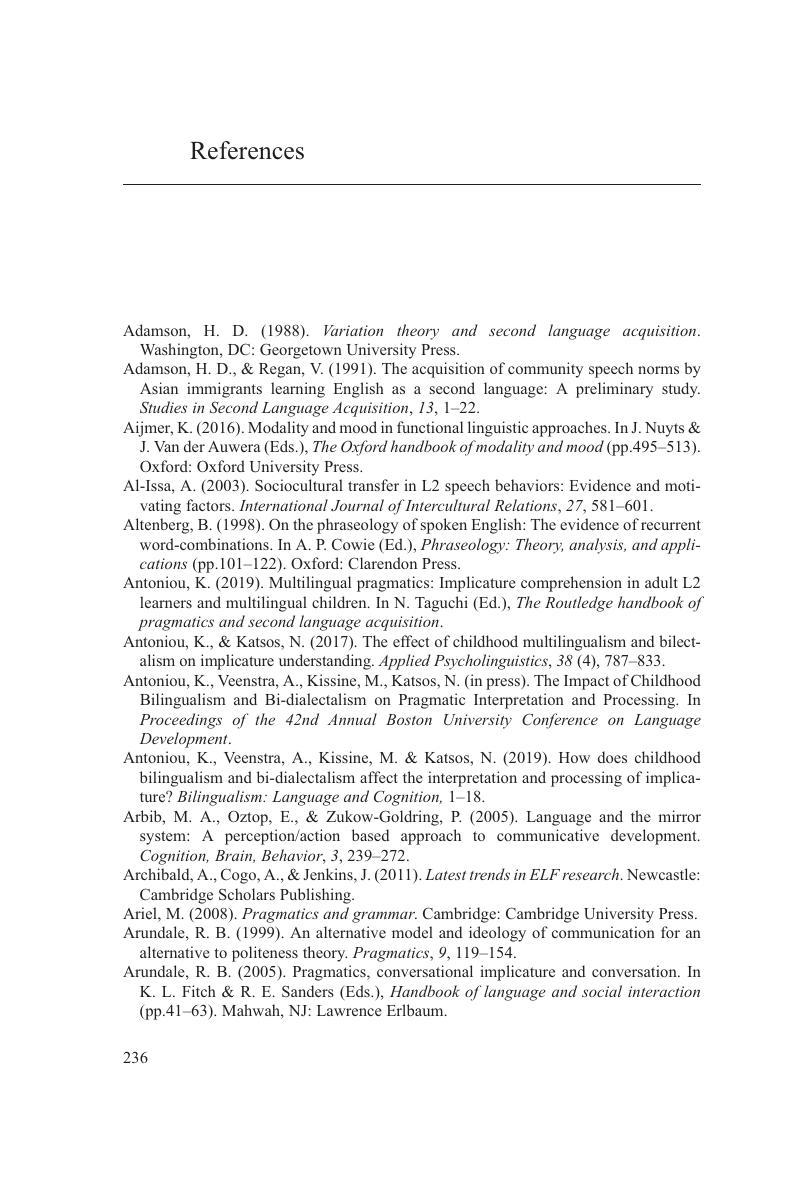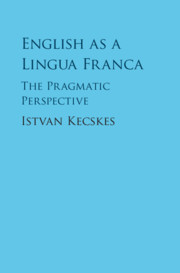Book contents
- English as a Lingua Franca
- English as a Lingua Franca
- Copyright page
- Contents
- Figures
- Tables
- Acknowledgments
- Introduction
- 1 The Nature of English as a Lingua Franca
- 2 Linguistic Creativity in ELF
- 3 Interactional Competence
- 4 Sociocultural Background Knowledge
- 5 Speaker’s Intention
- 6 The Semantics–Pragmatics Interface
- 7 Implicatures
- 8 Modality
- 9 Dialogic Sequences and Odd Structures
- Epilogue
- References
- Index
- References
References
Published online by Cambridge University Press: 18 November 2019
- English as a Lingua Franca
- English as a Lingua Franca
- Copyright page
- Contents
- Figures
- Tables
- Acknowledgments
- Introduction
- 1 The Nature of English as a Lingua Franca
- 2 Linguistic Creativity in ELF
- 3 Interactional Competence
- 4 Sociocultural Background Knowledge
- 5 Speaker’s Intention
- 6 The Semantics–Pragmatics Interface
- 7 Implicatures
- 8 Modality
- 9 Dialogic Sequences and Odd Structures
- Epilogue
- References
- Index
- References
Summary

- Type
- Chapter
- Information
- English as a Lingua FrancaThe Pragmatic Perspective, pp. 236 - 257Publisher: Cambridge University PressPrint publication year: 2019



